Physical Address
304 North Cardinal St.
Dorchester Center, MA 02124
A 62-year-old woman presents to her general gynecologist with a complaint of right-sided vulvar itching and discomfort over the past 2 months. She is an otherwise healthy person who receives age-appropriate, routine health maintenance, and screening. She notes the vulvar discomfort is pronounced with vaginal intercourse. The patient does have a history of a right-sided Bartholin gland infection in her 40s, which was treated with incision and drainage and Word catheter placement ( Fig. 18.1 ). On exam, the gynecologist notes a 2 cm firm, indurated nodule located at 8 o’clock in the labia minora, just cranial to the introitus. The mass is tender to palpation. The remainder of the exam is unremarkable. The clinician does not appreciate any palpable lymphadenopathy in the groins bilaterally. The clinician diagnoses a Bartholin gland abscess, and a plan for Bartholin gland marsupialization is made. In the OR, the surgeon incises the overlying epithelium. Minimal fluid is expressed. A firm, whitish nodule measuring approximately 3 cm is appreciated in the area of the suspected abscess. This nodule bleeds easily to minimal palpation, and a biopsy is taken. The procedure is aborted, given the unexpected intraoperative findings. Pathology demonstrates a Bartholin gland adenocarcinoma. What are the next steps in management? How might the treatment approach to Bartholin gland carcinoma differ from treatment of more common vulvar carcinomas?
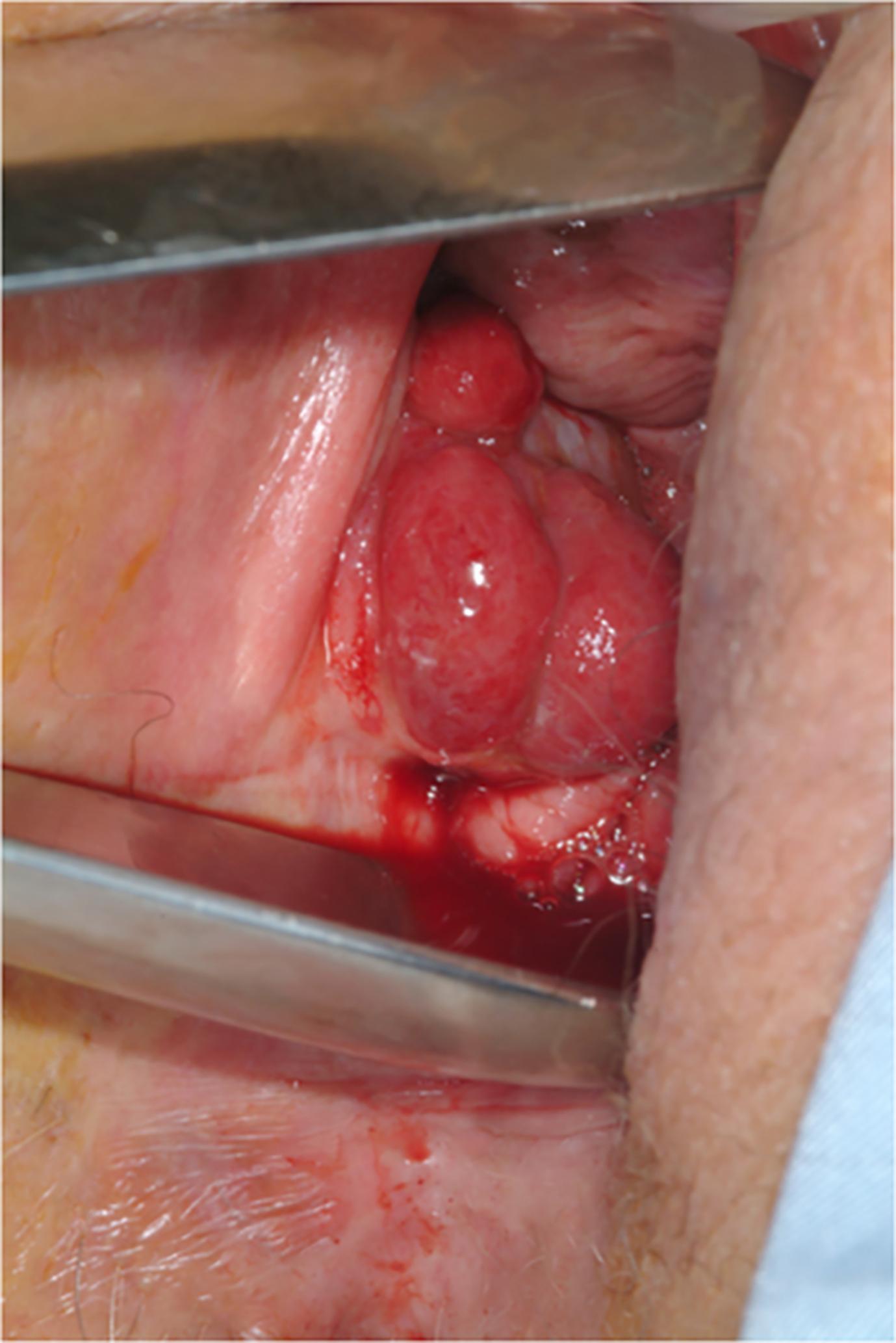
Vulvar cancer is a rare disease which accounts for 5% of all gynecologic malignancies. Approximately 6000 women are diagnosed with vulvar cancer annually. Among vulvar cancers, Bartholin gland carcinomas are rarer still, accounting for 1%–7% of all vulvar tumors and less than 1% of all gynecologic cancers. The Bartholin gland (also known as Bartholin’s gland, or greater vestibular gland) was first described by the Danish anatomist Caspar Bartholin in 1675 and has the normal function of providing vulvovaginal lubrication. The Bartholin glands and ducts are located bilaterally at approximately the 4 and 8 o’clock positions in the labia minora, with duct openings just proximal to the introitus, and with an approximate size of 0.5–1 cm. Bartholin gland carcinomas occur in women with a median age of 53 years. The average tumor size at diagnosis is 39 mm.
Approximately 17% of all patients are diagnosed with stage I disease, and 28% are diagnosed with stage II disease. Another 32% of patients are found to have stage III disease, in which disease has reached the inguinofemoral lymph nodes and 23% of patients are diagnosed with stage IV disease. Among patients who undergo primary surgical treatment, 5-year survival ranges from 70% to 93%.
There are no known etiologies or risk factors for Bartholin gland carcinomas. Prior history of a Bartholin gland abscess or cyst does not seem to be a risk factor for Bartholin gland carcinoma. HPV has been isolated at the site of some Bartholin gland carcinomas, and, in the case of squamous cell carcinomas HPV infection may have an etiological role.
Bartholin gland carcinomas encompass a broad variety of histologic patterns, best conceptualized by knowing the histology of the Bartholin gland. The gland is composed of mucinous epithelial lined glands that drain via ducts lined by squamous and transitional cell epithelium. As such, different histotypes may arise from their respective cell lineage, including: squamous cell carcinoma, adenocarcinoma, adenosquamous carcinoma, adenoid cystic carcinoma, transitional cell carcinoma, small cell neuroendocrine carcinoma, Merkel cell carcinoma (MCC), epithelial-myoepithelial carcinoma, and lymphoepithelioma-like carcinoma.
The mean size is 3.8 cm, with a reported standard deviation of approximately 2 cm. The tumors may either have an ulcerated surface or be deep seated with smooth overlying surface.
As these are rare tumors and the Bartholin gland may be secondarily involved by vulvar tumors, histologic criteria for diagnosis must be met to determine if the carcinoma is a primary from the Bartholin gland. These criteria are: (1) histology of the tumor is compatible with a Bartholin gland origin, (2) there is a transition from normal Bartholin gland elements to tumor and (3) no evidence of other primary tumor in the adjacent structures. In practice, not all criteria are met in a given case and sometimes distinction of a primary tumor from secondary involvement may be challenging. Squamous cell carcinoma is the most predominant histology, comprising approximately 50% of all Bartholin gland carcinomas, followed by adenocarcinoma ( Fig. 18.2 ) and adenoid cystic carcinoma.
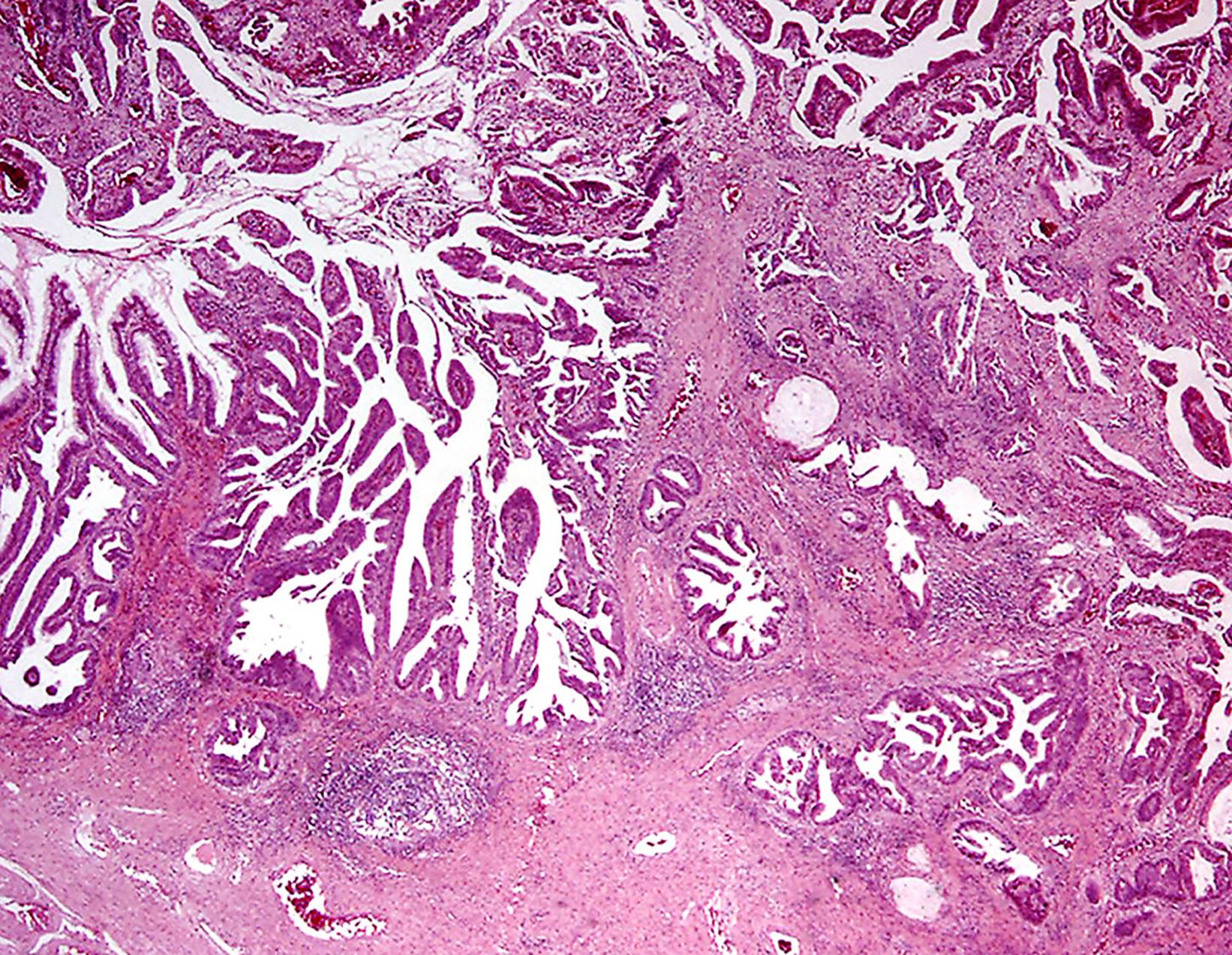
All carcinomas that arise in the Bartholin gland show similar morphology to their counterparts elsewhere in the body. Squamous cell carcinomas, for example, show similar histology to that of squamous cell carcinomas from other sites, varying in keratinization and cytologic atypia.
Adenoid cystic carcinomas show similar histology to that in the salivary gland, with uniform small cells arranged in cords and nests with an overall cribriform and cystic appearance, filled with an acellular basement membrane-like material ( Fig. 18.3 ). Perineural and lymphovascular invasion are characteristic findings. Immunohistochemistry shows positivity for c-kit (CD117) and p63, with the latter showing staining in the myoepithelial component.
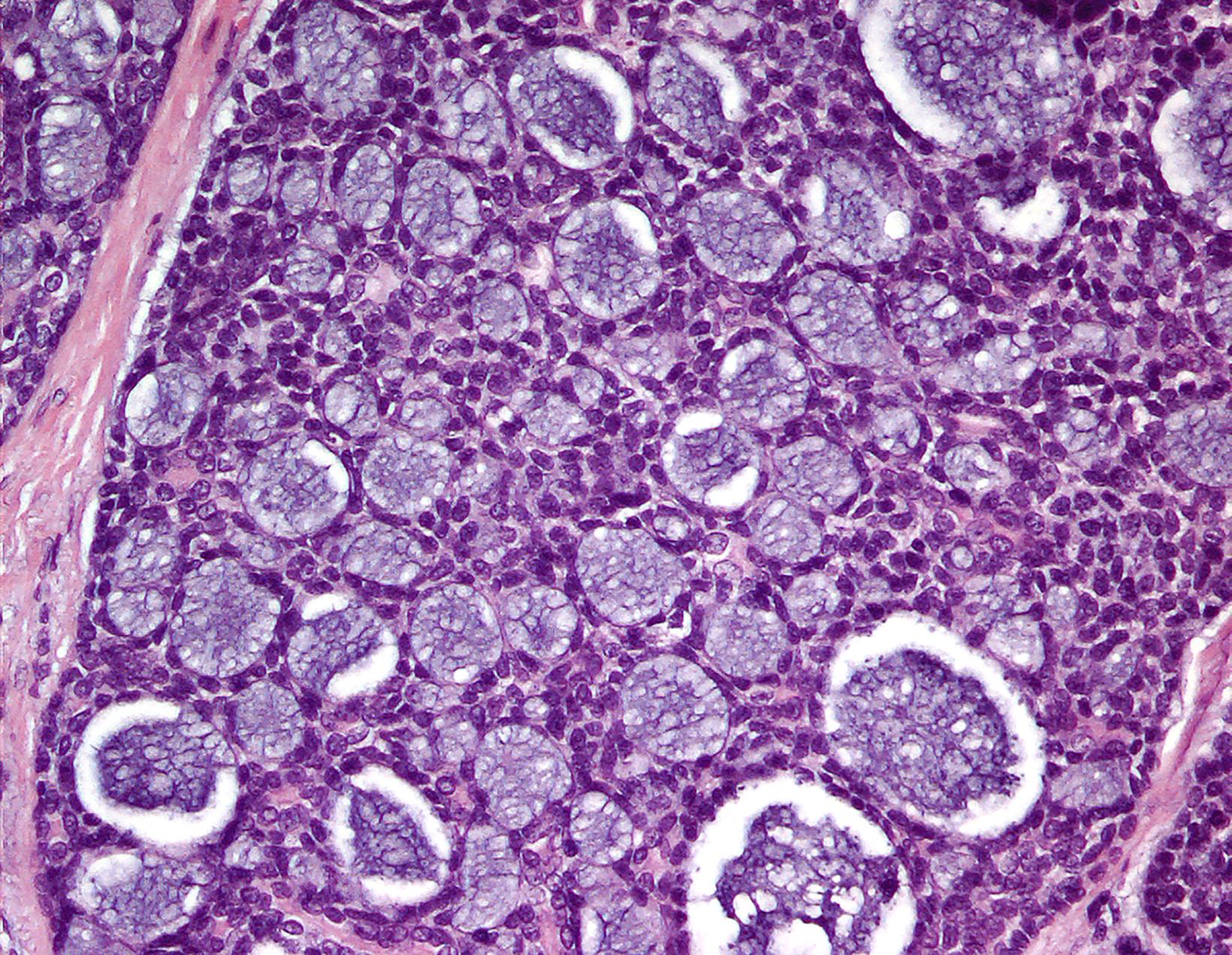
Neuroendocrine carcinomas involving the Bartholin gland are either small cell carcinomas or Merkel cell carcinoma. Small cell carcinoma has monotonous small cells, ovoid hyperchromatic nuclei with scant cytoplasm ( Fig. 18.4 ), and brisk mitotic/apoptotic activity with foci of necrosis. Some small cell carcinomas of the Bartholin gland have exhibited distinct lobular architecture and/or Flexner–Wintersteiner rosette-like structures. These findings may represent a characteristic histology for small cell carcinomas arising in this area. MCC has a similar morphologic appearance to small cell neuroendocrine carcinoma ( Fig. 18.5 ) but has a different immunophenotype from the latter.
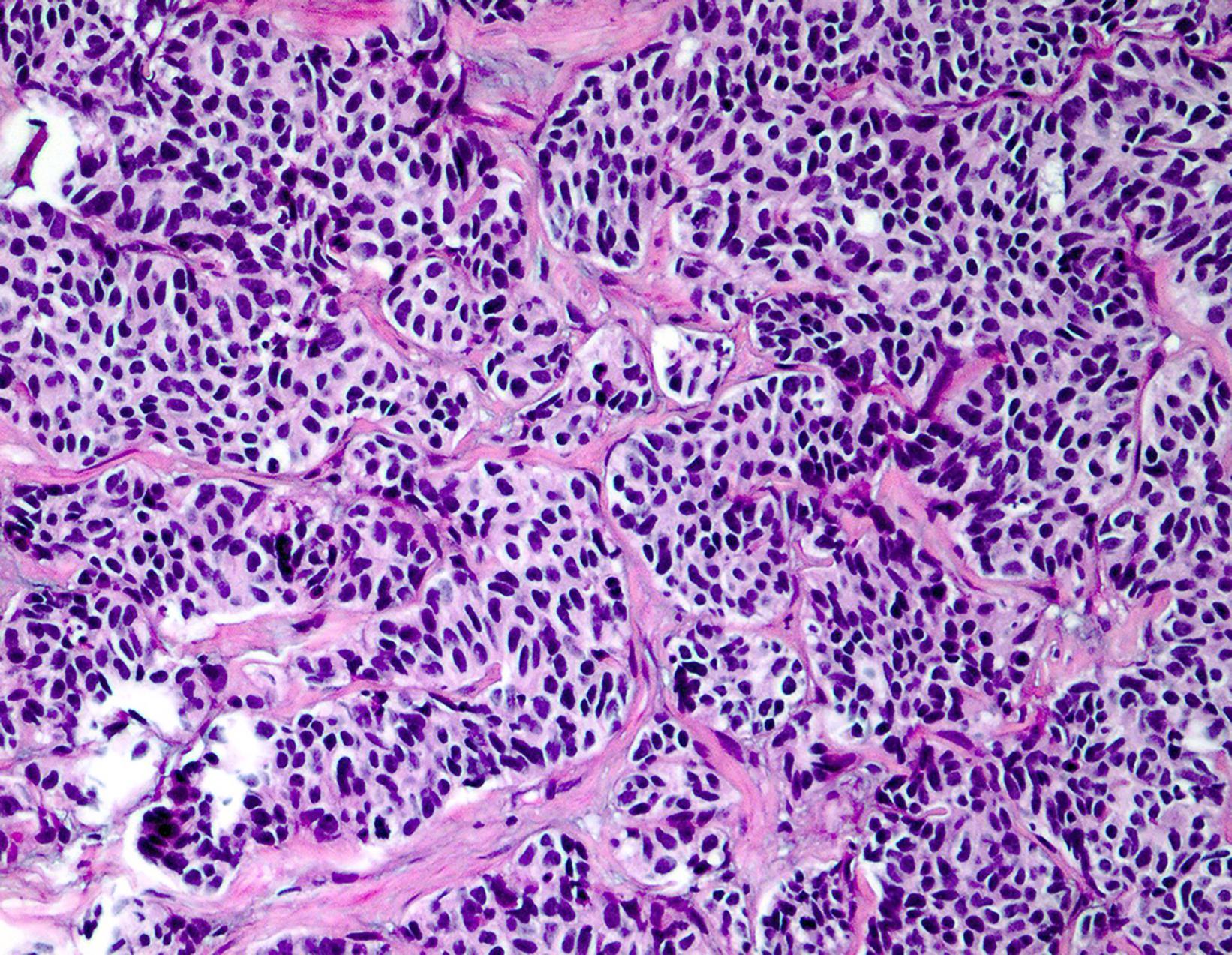
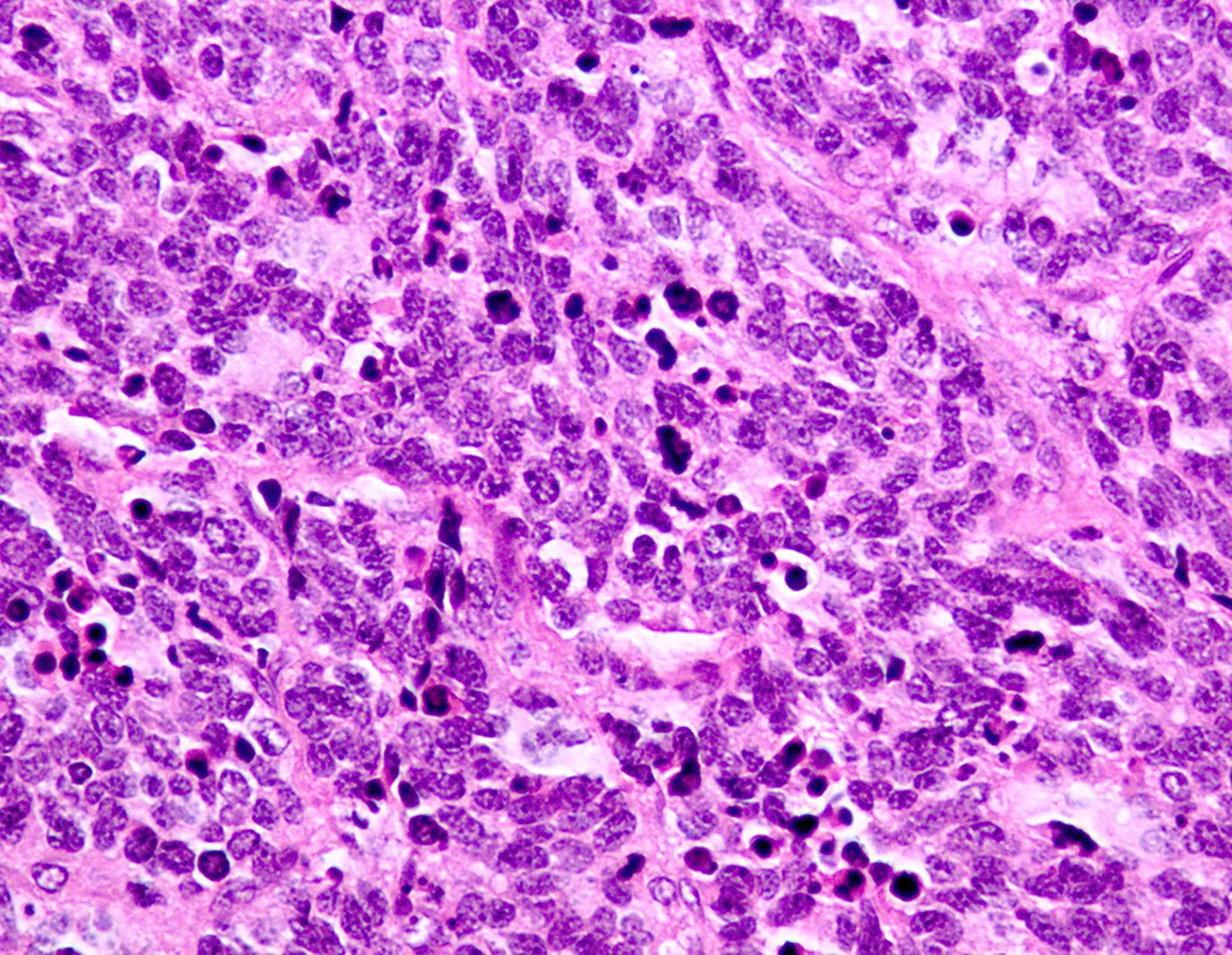
Become a Clinical Tree membership for Full access and enjoy Unlimited articles
If you are a member. Log in here